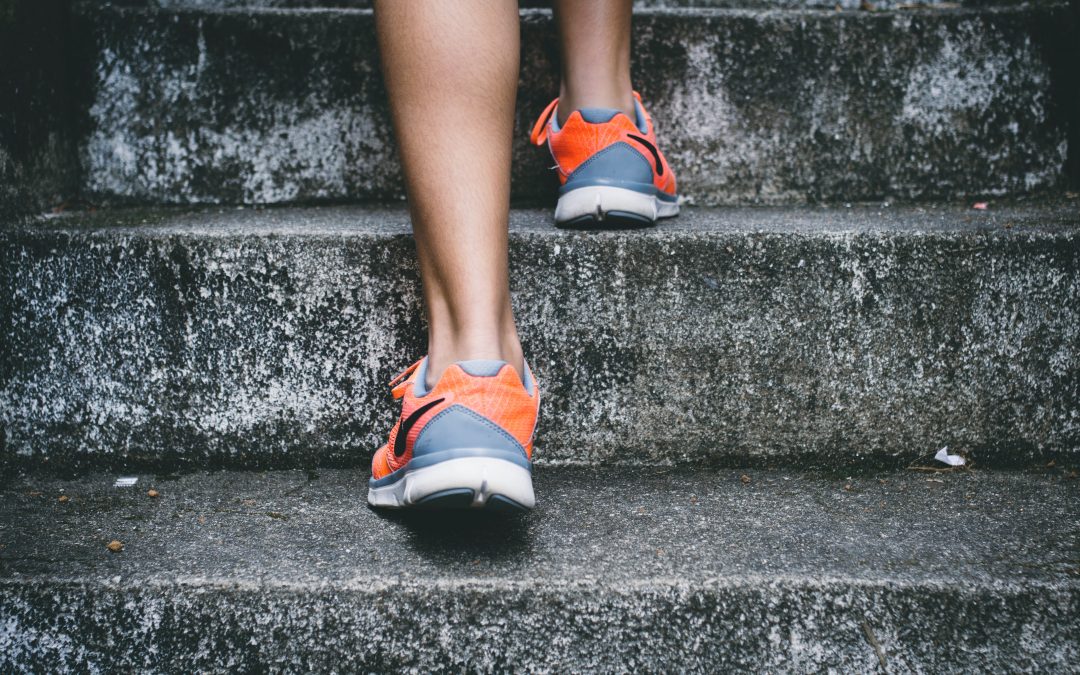Gait analysis testing is used in a variety of ways to capture clinically meaningful data. Commonly recorded gait metrics are used to track disease progression, changes in performance over time and treatment efficacy, identify gait deviations compared to healthy norms, and identify fall risk. Traditionally, gait assessments have been performed in a laboratory or clinic setting, however, recent improvements to wearable technology has opened the door for assessments outside of the clinic and lab space. Using wearable sensors, such as IMUs, it is possible to collect gait data for long periods of time in real-world settings. While real-world data collection has the potential to provide new insights about gait performance a few points must be kept in mind.
First, as we highlighted in a previous blog post, it is important to use a system which has been validated against a gold standard, and for the use you expect to have (ex. a system might be appropriate for general public but inappropriate for persons living with Parkinson’s disease). Next, contextualizing gait analysis outside a controlled setting is another key point. Generally, the true question behind the use of wearables in real-world data collection is about your definition of gait performance and if the data output matches what you expect to assess.
Indications for gait analysis in a lab/clinical setting or in real-world are different. The real-world assessment gives you information about how the person is performing during the daily life. This knowledge is as important as the controlled assessments are to orientate the therapeutic choices and to consider the specificities of the person. Both types of assessments share the same goal: improving quality of life of a person.
On the other hand, gait analysis within the laboratory or clinic setting is essential, when factors that influence the way a person walks are numerous*. Performing gait analysis testing with a system such as the Zeno Walkway System allows for protocol design so that external factors that affect gait are controlled.
Within the clinic, protocols can be carefully developed to control for these external factors so that differences in walking performance can be attributed to the appropriate effector. For example, a clinician might want to determine if a brace improves gait symmetry post-hemiplegic stroke. Within the clinic, the patient can be tested with and without the brace while controlling for other factors, such as environment and task while specifically knowing when the brace is on and when it is off. The clinician can be confident if there is improved gait symmetry in the braced condition it is due specifically to the brace, and no other potential factors. Real-world data can be much more difficult to contextualize and interpret as the changing environment and context of the movements inherently brings in multiple factors that will alter gait performance.
A recent article from Riona McArdle et al. out of Newcastle University set out to investigate the effect of environment on gait assessments using wearable sensors. In this study, gait was assessed using a wearable sensor to get pace, variability and asymmetry measures in both laboratory and real-world settings. 3 subject populations (Alzheimer’s disease, Dementia with Lewy bodies (DLB), and age-matched norms) each performed six 10-minute walk tests in the laboratory and had 7 days of continuous monitoring outside of the lab. Contrasts between the subject populations were found to be most obvious from the laboratory collected data, while real-world data only identified impairments in the DLB population. Specifically, in the real world, only very short walking bouts (<10 s) demonstrated different gait impairments between subtypes. The entire article (https://pubmed.ncbi.nlm.nih.gov/33530508/) is worth the read to get full context for these findings; however it is clear that the environment in which an analysis is performed will play a significant role in the resultant meaning of the data and that data collected in a controlled setting can be more sensitive to differences in population than real-world data, at least for some indications.
While there is a push to move testing out of the laboratory and clinic and into the real-world, researchers and clinicians must take care to ensure that system/data/protocol match with their clinical/research questions. The possibilities of taking gait assessment into the real world are exciting, but research is required to prove its efficacy and importance. As seen in the McArdle article, it is important to validate the efficacy of real-world data collection when compared to testing within the lab or clinic. Laboratory and clinic-based gait assessments will continue to allow for controlled data collection environments, producing meaningful, clinically relevant data.
Mc Ardle R, Del Din S, Donaghy P, Galna B, Thomas AJ, Rochester L. The Impact of Environment on Gait Assessment: Considerations from Real-World Gait Analysis in Dementia Subtypes. Sensors (Basel). 2021 Jan 26;21(3):813. doi: 10.3390/s21030813. PMID: 33530508; PMCID: PMC7865394.
*Factors that influence the way a person walks include but are not limited to:
- Footwear – Walking in sandals, high-heels, tennis shoes, or barefoot all can change the way a person walks.
- Assistive Devices – Using a cane or a walker can improve stability, decreasing gait variability and moving stance and swing times.
- Injuries/Pain/Disease – Knee pain will alter gait pattern as compensatory movements are used.
- Environment – Walking on sand vs. cement will change the energy output needed to walk. Gait patterns are often adjusted when walking in slippery, wet conditions vs. dry conditions. Walking through a busy city center presents distractions that can alter gait that are not seen on a desolate sidewalk.
- Task – Walking for exercise, walking as a form of transportation, and walking while shopping generally have different gait speed and cadence.
- Context of Tasks – Gait speed and pattern may change if you are late vs. early, walking alone vs. with company, or on- vs. off-medication.
